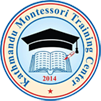
Introduction to the Checkerboard
Learning multiplication using the checkerboard in a Montessori school involves a hands-on and sequential approach. Here is a step-by-step guide on how students typically learn multiplication with the checkerboard in a Montessori setting:
1. Introduction to the Checkerboard:
Start by introducing the checkerboard as a mathematical tool. Explain that it will help them understand and practice multiplication in a visual and hands-on way.
2. Understanding the Checkerboard Layout:
Familiarize students with the layout of the checkerboard. Explain that it consists of squares arranged in rows and columns, each representing a specific place value (units, tens, hundreds, etc.).
3. Introduction to Beads:
Introduce the beads that correspond to each place value on the checkerboard. Typically, green beads represent units, blue beads represent tens, and red beads represent hundreds.
4. Simple Multiplication:
Begin with simple multiplication using single-digit numbers. For example, demonstrate the multiplication of 2 (units) by 3 (units) by placing the appropriate number of beads on the squares and counting the total.
5. Understanding Grouping:
Emphasize the concept of grouping and exchanging beads between the units, tens, and hundreds columns. This helps students grasp the idea of carrying over in multiplication.
6. Exploring Larger Numbers:
Progress to larger numbers and multi-digit multiplication. Demonstrate how to multiply a two-digit number by a one-digit number, and vice versa, using the appropriate beads on the checkerboard.
7. Encouraging Independent Practice:
Provide opportunities for students to practice independently. Allow them to choose multiplication problems and solve them using the checkerboard, reinforcing the concept through hands-on exploration.
8. Self-correction:
Emphasize the self-correcting nature of the checkerboard. Students can check their work by counting the beads and ensuring that the result matches their calculation. This encourages self-correction and independence.
9. Extension Activities:
Introduce extension activities to challenge students and deepen their understanding. This could involve more complex multiplication problems or using the checkerboard to explore related concepts like square numbers.
10. Real-world Application:
Connect the learned multiplication skills to real-world applications. Discuss situations where multiplication is useful, such as calculating the total cost of items or determining the area of a rectangular space.
11. Group and Peer Learning:
Foster collaborative learning by allowing students to work in pairs or small groups. Encourage them to explain their thought processes and methods to their peers, reinforcing understanding through teaching.
12. Continuous Reinforcement:
Continuously reinforce multiplication concepts using the checkerboard throughout the school year. Regular practice ensures that students retain and build upon their understanding.
By following these steps and providing a supportive and interactive learning environment, students in a Montessori school can effectively learn multiplication using the checkerboard, developing a strong foundation in mathematical concepts.

